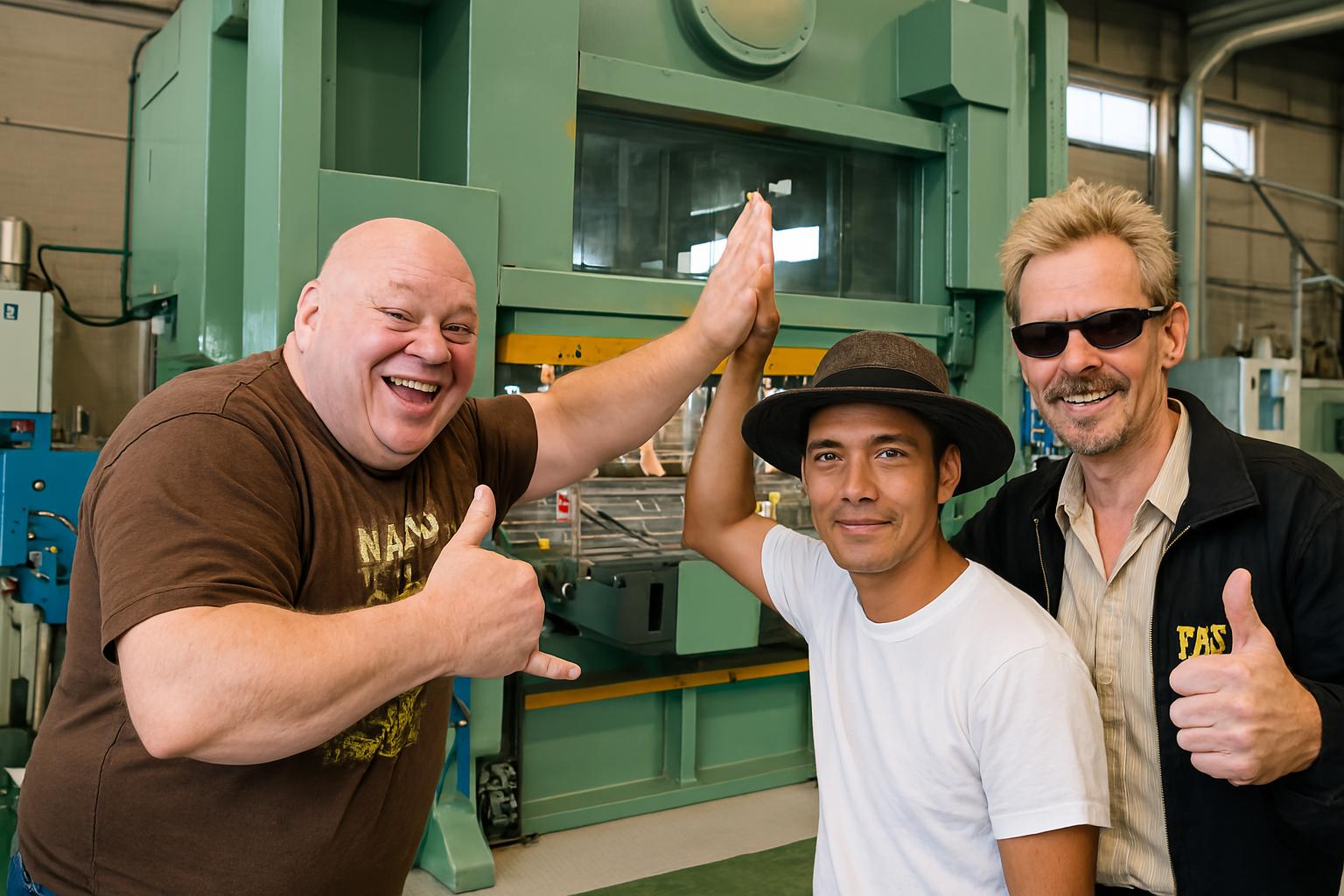In 2005, I was sent from Japan to a factory in Frankfort, Kentucky.
My mission: Fix a critical defect in the seat adjuster parts they were making.
These parts were causing serious vibration while driving, and the adjuster mechanism wasn’t working properly.
According to the local team, the problem was in the part’s shape.
The bracket and rail were integrated into one smart design.
But with each press stroke, the bending angle got weaker, the bend position started shifting,
and the U-shaped base turned into a damn arc.
When mounted in the car, it caused all kinds of chaos.
And it wasn’t just one issue—we had about six different defects happening at the same time.
Worse, these parts weren’t made using Japanese dies.
Nope—these dies were made locally in Frankfort.
Back in Japan, the U-bend was done as a final “cut-bend” process,
with a solid bottom stop, minimal warp, and clean flatness.
Why? Because that base was the sliding surface—super important.
But the US-made die used two-stage bending.
The structure caused warping on the web and flange sides, and they weren’t bottomed out properly.
The team tried all sorts of fixes—but nothing worked.
And that’s when they called me in.
At that time, I wasn’t a die design expert.
I had experience with fine blanking and single-hit dies,
but I was more involved with machining and parts procurement.
Still, I was the guy they sent. Alone.
I arrived in America and BAM—
The Japanese general manager yelled,
“Fix it fast, dammit!”
Day one. Different country. Different language. No clue what was going on.
I tried talking to the American staff.
They ignored me completely. Didn’t understand me. Didn’t want to.
I felt crushed.
That night, I went straight to my room and started studying English.
Real phrases. Work-related scenarios.
I imagined what might happen the next day and memorized what I’d say.
The next morning, I saw a scene right out of a movie—
The 1000-ton press area was in chaos.
A 200-kilo Yankee giant and his skinnier-but-still-huge partner were clearly in trouble.
I saw my chance.
Walked up and said:
“Can I help you?” — my first real line of English.
They started talking—fast, loud, full of slang—but I caught the gist.
I took a shot, fixed the issue, and BOOM, it worked.
The big guy slapped my hand for a high-five and yelled:
“HEY! KENI!”
From that moment, I wasn’t just “some Japanese dude.”
I was Keni.
And things started changing.
Even the die guys started opening up.
Now, about that die…
It was a complex American design:
- Two-stage bending
- A re-strike step
- And the second bend used a cam system.
For a long seat adjuster, it made sense… in theory.
The cam spring was fine.
No damage to the die.
But still—something was off.
Days passed. No answers.
Then one day, I took off the upper stripper plate and finally saw it:
The springs were way off position.
They weren’t pushing where the material really needed to be held during bending.
Plus, the stripper was made from pre-hardened steel, no heat treatment.
It had a weak double-plate structure. Honestly, it looked like a pancake.
That’s it! That’s the damn cause!
I explained it to the local staff.
They looked skeptical, but they agreed to try my fix.
🔧 The Fix:
- Added gas springs right above the bend.
- Reinforced the existing coil springs.
- Shaved down the holders to allow deflection.
- Re-machined massive, heat-treated punch plates.
A serious overhaul. A real workout.
Then came the big day:
1000-ton press trial.
Out came the part…
Perfect.
The measurement? Spot on.
And then it started:
“Damn, Keni! You’re a genius!”
“Holy crap, it actually worked!”
“Keni, you’re the man!”
High fives everywhere.
I’ll never forget that feeling.
What I Learned:
You can throw all the springs and cushions you want in a die—
But if they’re not where the force is needed,
they’re useless.
In this case, there was no escape bend on the other side,
so the material was dragged, pulled, twisted.
This problem had always been there, even from the first die trial.
But slowly—spring wear, material variation, surface changes—
It crossed the line and became a full-blown disaster.
Final Words
I didn’t find the “answer.”
I just listened—to the steel, to the tool, to the part.
Because sometimes…
the metal screams before it breaks.
You just have to hear it.

